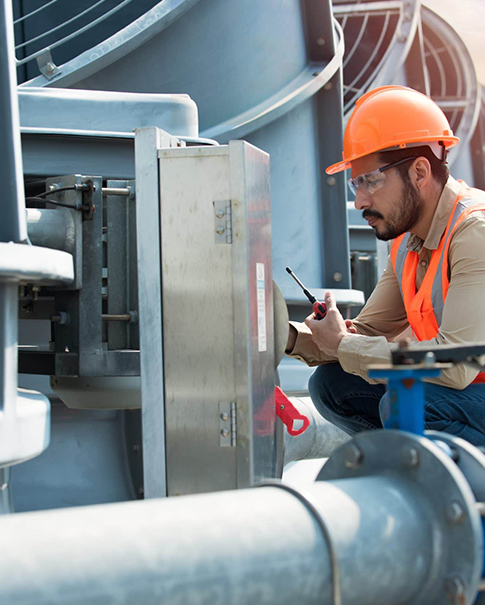Electroplating Water Cooled Chiller Or Electroplating Air Cooled Chillers?
Mar 17, 2025
In the electroplating industry, maintaining a stable and appropriate temperature is crucial for the quality of the plating process. This is where the choice between water cooled chillers and air cooled chillers becomes a significant decision. Let's explore the pros and cons of each to help you make an informed choice for your electroplating operations.
Cooling Efficiency
Electroplating water cooled chillers generally offer higher cooling efficiency. Water has a much higher heat - transfer coefficient compared to air. In an electroplating plant, where large amounts of heat need to be dissipated quickly, a electroplating water chiller can transfer heat more effectively. For example, in a large - scale electroplating production line with high volume plating tanks, a electroplating water cooled chiller can rapidly cool the plating solution, ensuring a consistent temperature. This is essential for achieving uniform plating thickness and high quality finishes.
On the other hand, electroplating air chillers rely on air to dissipate heat. While they are suitable for some applications, their cooling efficiency is relatively lower. The heat transfer in air cooled systems is slower, which may not be sufficient for high heat load electroplating processes. However, for smaller electroplating shops with lower heat generation, an electroplating air cooled chiller might be adequate.
Installation and Space Requirements
Air cooled chillers are more straightforward to install. They do not require a complex water cooling tower or a dedicated water supply system. This makes them an attractive option for facilities where space is limited or where the installation of a water cooling infrastructure is not feasible. For instance, in a compact electroplating workshop located in an urban area with restricted space, an electroplating air cooled chiller can be easily placed on the floor, saving valuable floor space.
Water cooled chillers, in contrast, need a cooling tower and a network of pipes for water circulation. The installation of these components requires more space and careful planning. The cooling tower needs to be placed in an area with good air circulation, which may not always be available in some electroplating facilities. Additionally, the plumbing work for the water cooled system can be more complex and time consuming.
Energy Consumption
Electroplating coating water cooled chillers tend to consume less energy in the long run, especially in large scale operations. Their higher cooling efficiency means that they can achieve the same cooling effect with less power input compared to electroplating coating air cooled chillers. In an electroplating factory that operates around the clock, the energy savings from using a plating water cooled chiller can be significant over time.
Air cooled chillers, due to their lower efficiency, generally consume more energy. The fans used to dissipate heat in air cooled systems require continuous power, and this can add up to a substantial energy cost, especially for high duty electroplating processes. However, for intermittent or low load electroplating operations, the energy consumption difference may not be as pronounced.
Maintenance
Air cooled chillers are relatively easier to maintain. They have fewer components compared to water cooled systems. The main maintenance tasks involve cleaning the air filters and checking the fan motors. In an electroplating environment, where there may be contaminants in the air, regular filter cleaning can ensure optimal performance.
Water cooled chillers, on the other hand, require more extensive maintenance. The cooling tower needs to be cleaned regularly to prevent the build up of scale and algae. The water treatment system, which is essential for preventing corrosion in the pipes and the chiller itself, also needs to be monitored and maintained. In an electroplating facility, where the water used in the cooling system may come into contact with various chemicals, proper water treatment becomes even more critical.
Cost
In terms of initial cost, air cooled chillers are often more affordable. Their simpler design and lack of a need for a complex water - cooling infrastructure result in lower purchase and installation costs. This makes them an attractive option for small to medium sized electroplating businesses with budget constraints.
Water cooled chillers, while more expensive to purchase and install initially, can offer long term cost savings due to their lower energy consumption and higher cooling efficiency. For large scale electroplating operations with high heat load requirements, the investment in a water cooled chiller may be well worth it in the long run.
In conclusion, the choice between a water cooled and an air cooled chiller in the electroplating industry depends on several factors, including the scale of the operation, available space, energy costs, and maintenance capabilities. For large scale, high heat load electroplating plants, a water cooled chiller may be the better choice despite its higher initial cost. However, for smaller facilities with limited space and lower heat load requirements, an air cooled chiller can provide a cost effective and convenient solution.
Choose Hengde, Choose Perfect Electroplating Chillers!
